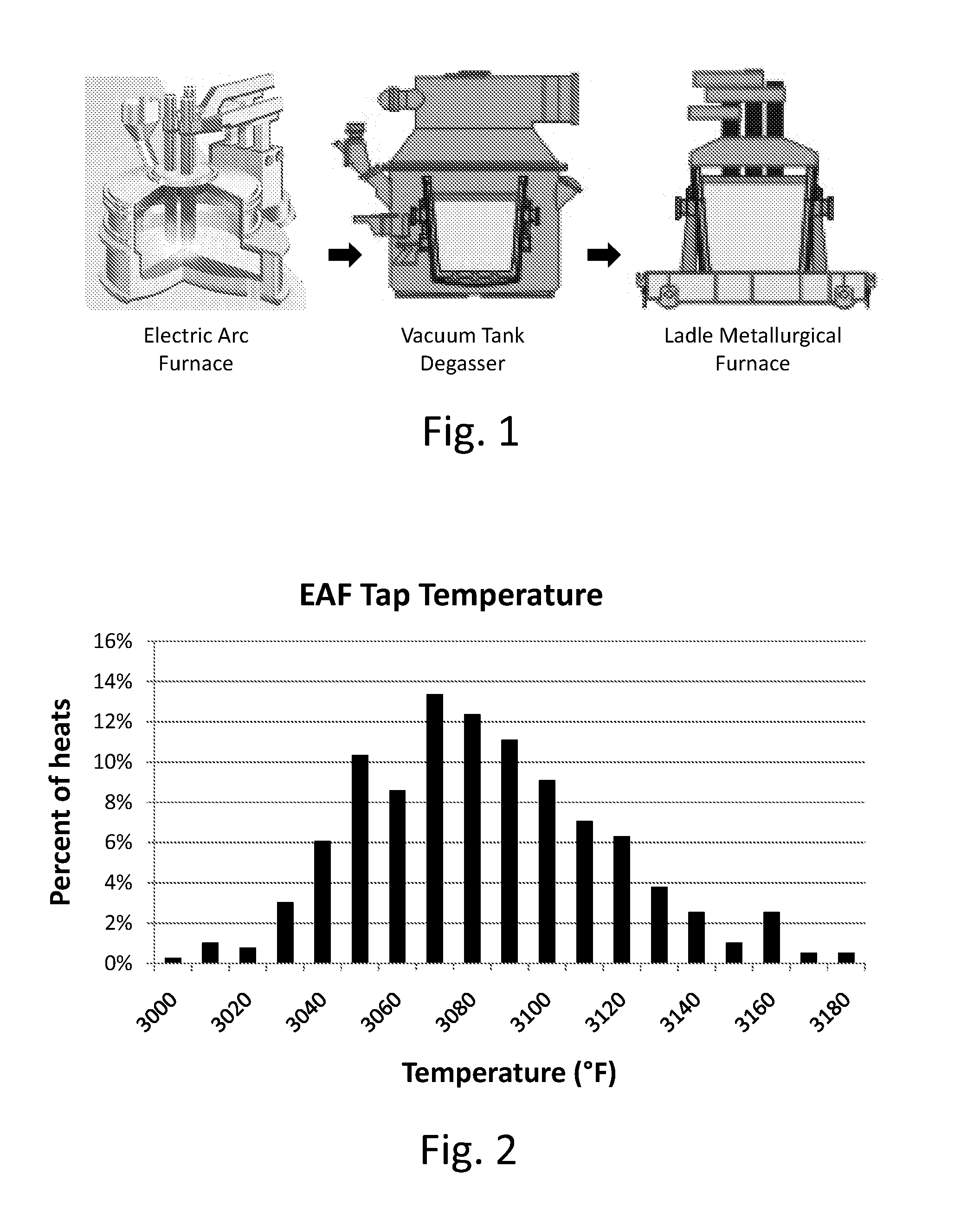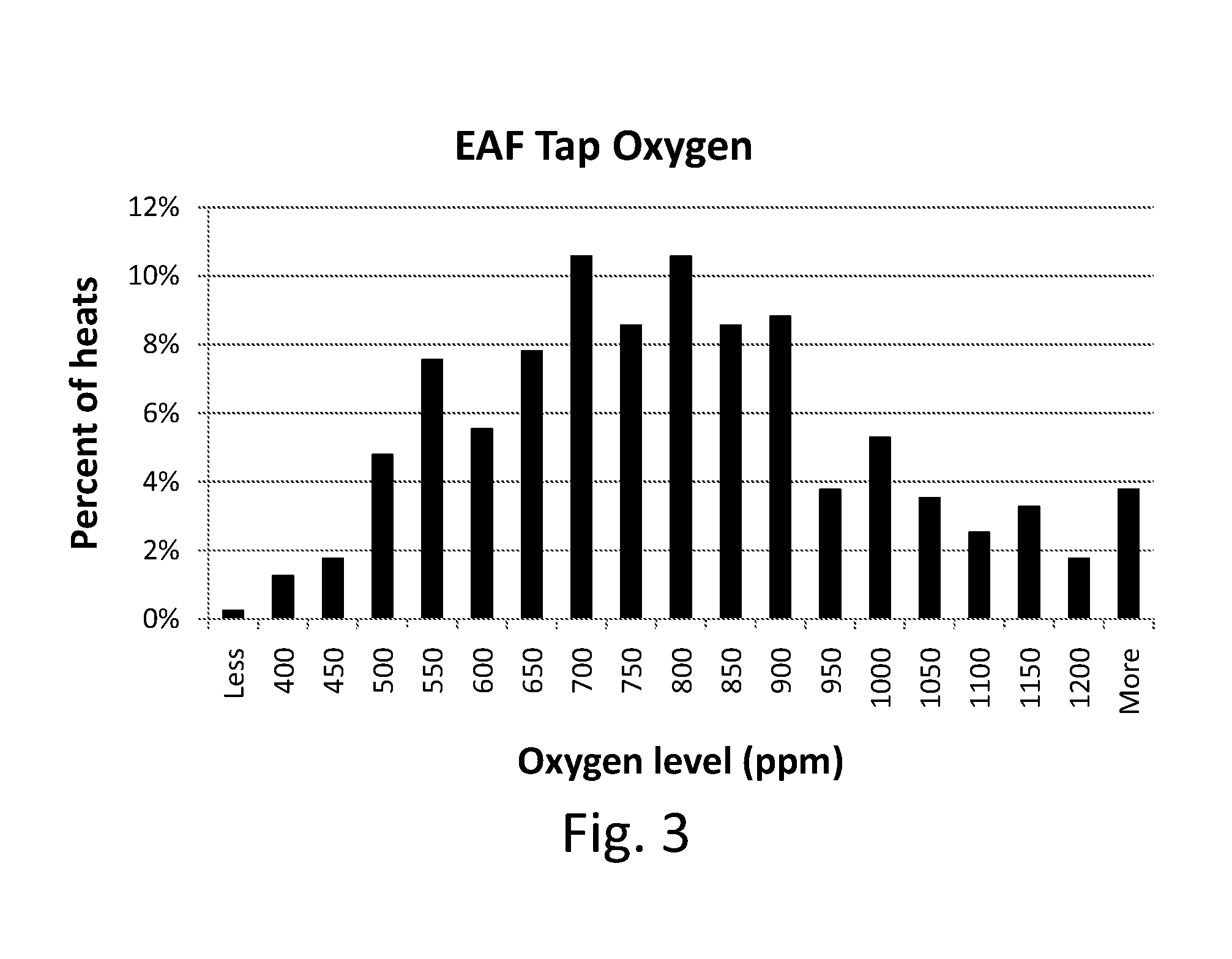Method of desulfurizing steel
a desulfurizing steel and desulfurizing technology, applied in the direction of manufacturing tools, lighting and heating equipment, furnaces, etc., can solve the problems of high adverse effect on the productivity of the furnace, and excessive refractory wear on the furnace walls, so as to reduce the carbon level
- Summary
- Abstract
- Description
- Claims
- Application Information
AI Technical Summary
Benefits of technology
Problems solved by technology
Method used
Image
Examples
Embodiment Construction
[0072]In a process for preparing steel for casting, as shown diagrammatically in FIG. 1, the steel typically progresses from an electric arc furnace (EAF) to a vacuum tank degasser (VTD) to a ladle metallurgical furnace (LMF) before casting. The steel grades produced by the presently disclosed method typically have carbon less than about 0.05% by weight. The steel grade also typically has low nitrogen less than about 0.005% by weight and low sulfur less than about 0.003% by weight, or less than about 0.0015% by weight.
[0073]A steel melt shop typically has one or more electric arc furnaces, such as a 120 ton (metric ton) EAF equipped with 110 megavolt-ampere (MVA) transformers. Such electric arc furnaces may be between about 30 ton and 400 ton capacity, but are generally for continuous casting between 60 and 120 tons capacity. Each furnace may contain gas injection lances, such as a More brand gas injector system, through which a combination of oxygen and natural gas can be blown int...
PUM
| Property | Measurement | Unit |
|---|---|---|
| temperature | aaaaa | aaaaa |
| tap temperature | aaaaa | aaaaa |
| tap temperature | aaaaa | aaaaa |
Abstract
Description
Claims
Application Information
 Login to View More
Login to View More - R&D
- Intellectual Property
- Life Sciences
- Materials
- Tech Scout
- Unparalleled Data Quality
- Higher Quality Content
- 60% Fewer Hallucinations
Browse by: Latest US Patents, China's latest patents, Technical Efficacy Thesaurus, Application Domain, Technology Topic, Popular Technical Reports.
© 2025 PatSnap. All rights reserved.Legal|Privacy policy|Modern Slavery Act Transparency Statement|Sitemap|About US| Contact US: help@patsnap.com



